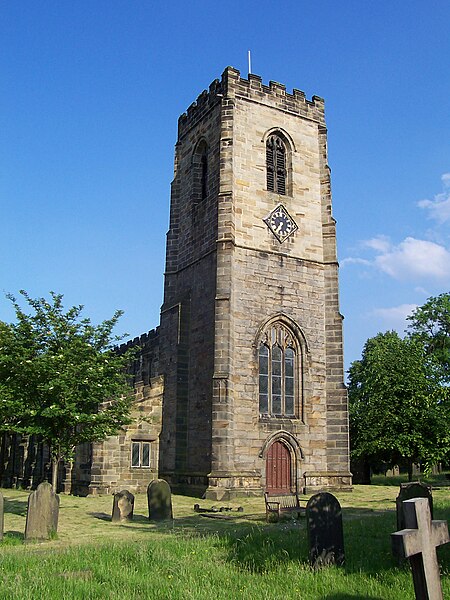All Saints Church, Darton
15th-century church buildings in EnglandChurch of England church buildings in South YorkshireGrade I listed churches in South YorkshireUse British English from November 2019

The Church of All Saints is the parish church in the village of Darton in South Yorkshire, England. It is a Church of England church in the Diocese of Leeds. The 16th-century building is Grade I listed and was built on the site of an earlier church from 1150.
Excerpt from the Wikipedia article All Saints Church, Darton (License: CC BY-SA 3.0, Authors, Images).All Saints Church, Darton
Church Street,
Geographical coordinates (GPS) Address Nearby Places Show on map
Geographical coordinates (GPS)
| Latitude | Longitude |
|---|---|
| N 53.585 ° | E -1.5325 ° |
Address
A Wilshaw
Church Street
S75 5HQ
England, United Kingdom
Open on Google Maps










